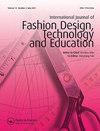可持续视觉营销实践在预测零售商店忠诚度中的作用
IF 2.2
Q3 BUSINESS
International Journal of Fashion Design, Technology and Education
Pub Date : 2021-12-21
DOI:10.1080/17543266.2021.2014985
引用次数: 0
摘要
摘要本研究的目的是了解可持续视觉营销实践在预测零售商店忠诚度中的作用。刺激-有机体-反应模型框架与现有文献一起用于支持提出的假设。一项在线调查是为了从美国一所大型公立大学的学生中收集数据而进行的。共收集了737份可用的调查问卷。进行了各种统计分析。采用结构方程模型对假设进行检验。基于标准化路径系数和显著性水平,对可持续视觉营销实践的态度积极影响(H1)购买意愿和(H2)惠顾意愿。购买意愿与店铺忠诚(H3)的关系不显著。惠顾意向(H4)正向影响店铺忠诚度。总的来说,假设模型解释了60%的商店忠诚度差异。讨论了理论和管理意义。本文章由计算机程序翻译,如有差异,请以英文原文为准。
The role of sustainable visual merchandising practices in predicting retail store loyalty
ABSTRACT The purpose of the present study was to understand the role of sustainable visual merchandising practices in predicting retail store loyalty. Stimulus–Organism–Response model framework was used along with extant literature to support the proposed hypotheses. An online survey was administered to collect the data from a convenience sample of students in a large public university in the United States. A total of 737 useable surveys were collected. A variety of statistical analysis was conducted. Structural equation modelling was used to test the hypotheses. Based on standardised path coefficients and significance levels, attitude toward sustainable visual merchandising practices positively influenced both (H1) willingness to buy and (H2) patronage intention. The relationship between willingness to buy and store loyalty (H3) was non-significant. Patronage intention (H4) positively influenced the store loyalty. In total, the hypothesised model explained 60% of variance in store loyalty. Theoretical and managerial implications are discussed.
求助全文
通过发布文献求助,成功后即可免费获取论文全文。
去求助
来源期刊

International Journal of Fashion Design, Technology and Education
Arts and Humanities-Visual Arts and Performing Arts
CiteScore
3.10
自引率
0.00%
发文量
36
 求助内容:
求助内容: 应助结果提醒方式:
应助结果提醒方式:


